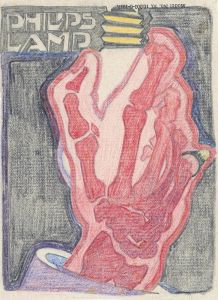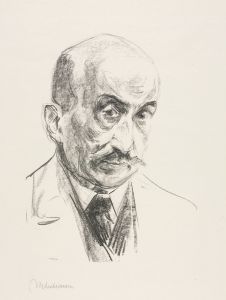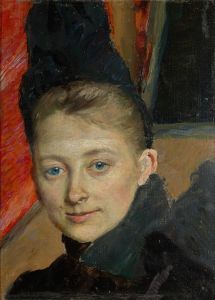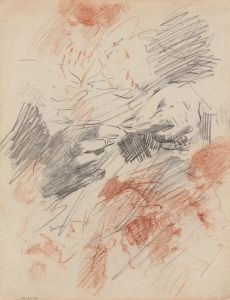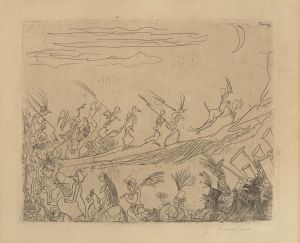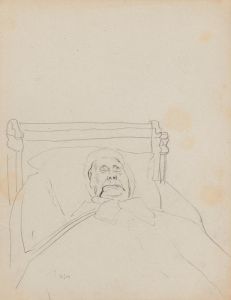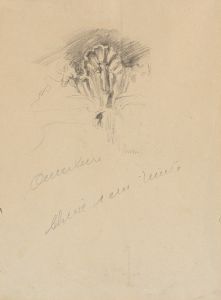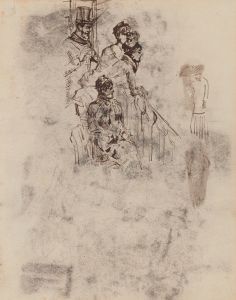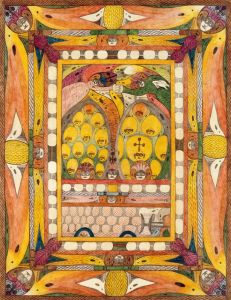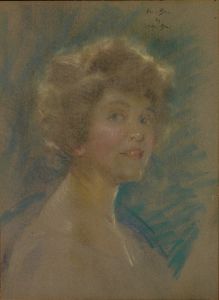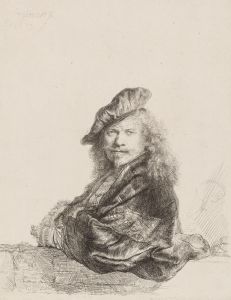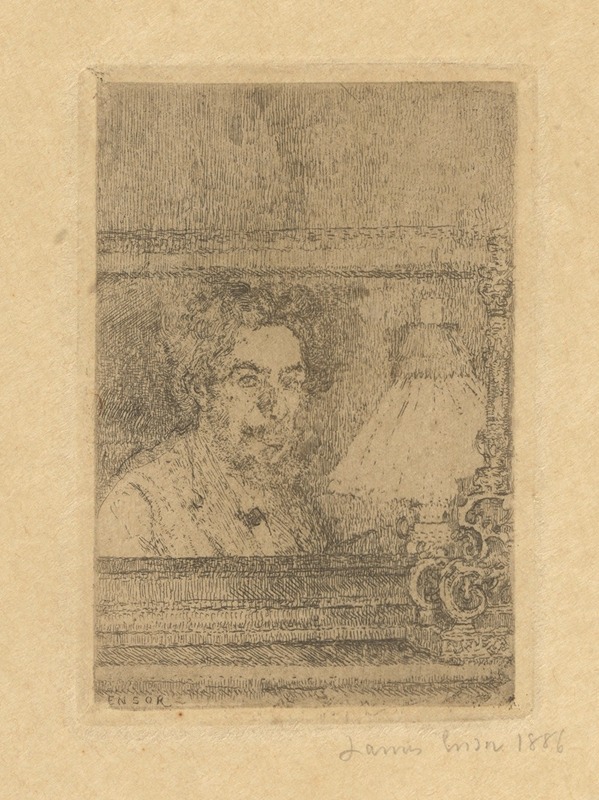
Self-Portrait
A hand-painted replica of James Ensor’s masterpiece Self-Portrait, meticulously crafted by professional artists to capture the true essence of the original. Each piece is created with museum-quality canvas and rare mineral pigments, carefully painted by experienced artists with delicate brushstrokes and rich, layered colors to perfectly recreate the texture of the original artwork. Unlike machine-printed reproductions, this hand-painted version brings the painting to life, infused with the artist’s emotions and skill in every stroke. Whether for personal collection or home decoration, it instantly elevates the artistic atmosphere of any space.
James Ensor's "Self-Portrait" is a notable work by the Belgian artist, who is widely recognized for his unique contribution to the Symbolist movement and his influence on later Expressionist artists. Ensor, born in 1860 in Ostend, Belgium, was known for his innovative use of color and his often satirical and fantastical subject matter. His work frequently explored themes of death, masks, and the grotesque, reflecting his fascination with the human condition and societal norms.
The "Self-Portrait" by James Ensor is a reflection of his distinctive style and thematic interests. While Ensor created several self-portraits throughout his career, each offers insight into his evolving artistic identity and personal introspection. His self-portraits often depict him in various guises, sometimes incorporating masks or other symbolic elements, which were recurring motifs in his oeuvre.
Ensor's approach to self-portraiture was unconventional for his time. He often portrayed himself with exaggerated features or in surreal settings, challenging traditional representations of the self. This approach not only highlighted his technical skill but also his willingness to delve into the psychological and existential aspects of self-representation. His self-portraits can be seen as a commentary on the role of the artist in society and the multifaceted nature of identity.
One of the most famous self-portraits by Ensor is "Self-Portrait with Masks" (1899), which exemplifies his fascination with masks as symbols of disguise and revelation. In this work, Ensor places himself among a crowd of grotesque, masked figures, suggesting themes of alienation and the duality of human nature. The masks serve as a metaphor for the personas people adopt in social contexts, a theme that Ensor explored extensively in his art.
Ensor's use of vibrant colors and bold brushwork in his self-portraits reflects his departure from the more subdued palette of earlier artistic traditions. His innovative techniques and thematic boldness positioned him as a precursor to Expressionism, influencing artists such as Emil Nolde and Edvard Munch. Ensor's work, including his self-portraits, challenged the conventions of his time and paved the way for future explorations of the self in art.
Throughout his career, Ensor remained in Ostend, drawing inspiration from his coastal surroundings and the carnival culture of the region. His self-portraits, like much of his work, are imbued with a sense of place and personal history, offering a window into the mind of an artist who was both a product of his environment and a visionary ahead of his time.
In summary, James Ensor's "Self-Portrait" is emblematic of his broader artistic vision, characterized by a blend of realism and fantasy, a vibrant palette, and a deep engagement with themes of identity and society. His self-portraits continue to be celebrated for their originality and psychological depth, securing Ensor's place as a pivotal figure in the transition from 19th-century Symbolism to 20th-century Expressionism.





